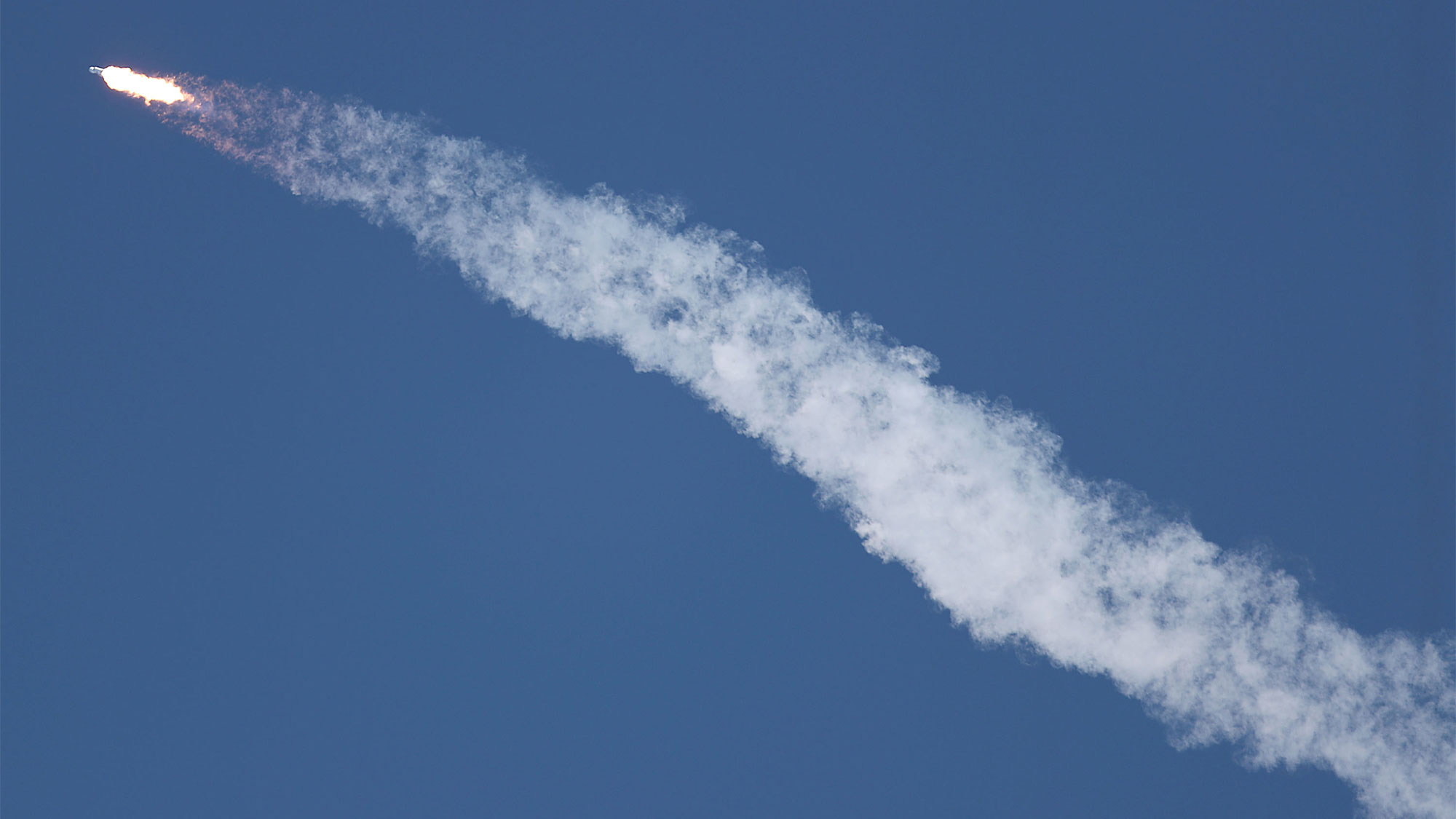In Photos: The Amazing Triple Rocket Landing of SpaceX's Falcon Heavy Launch of Arabsat-6A
SpaceX launched the first commercial Falcon Heavy mission and aced a triple booster landing for the first time.

SpaceX's first Falcon Heavy rocket with a commercial payload on board blasted off from NASA's Kennedy Space Center at 6:35 p.m. EDT (2235 GMT) on April 11, 2019. The flight came more than a year after the rocket's first demonstration mission, which launched founder and CEO Elon Musk's cherry-red Tesla and a dummy named Starman into orbit around the sun.
The Falcon Heavy is SpaceX's current megarocket, and is essentially composed of three of the company's standard Falcon 9 rockets strapped together. The April 11 mission launched an advanced communications satellite called Arabsat-6A, which will provide communications services to customers living in the Middle East, Africa and parts of Europe.
Full Story: SpaceX Falcon Heavy Sticks Triple Rocket Landing with 1st Commercial Launch

Onlookers turned out to enjoy the beautiful weather during the early-evening launch. The flight suffered a 24-hour delay from its previous launch attempt on April 10, on account of high winds at the pad.

The Falcon Heavy rocket's 27 Merlin engines roar to life in this close-up view captured just seconds after liftoff.

This Falcon Heavy was the first to use Block 5 technology, which SpaceX rolled out to their Falcon 9 launches in May 2018. Block 5 versions are more powerful and designed to be more robust for the company to reuse.

SpaceX is hoping that, with Heavy's first commercial flight under its belt, it can increase the frequency with which the massive rocket blasts off. The company is targeting another launch in June, which would carry an Air Force satellite and several smaller science and technology payloads.

The Falcon Heavy is the most powerful rocket at work today. Launches on the massive rocket start at a base price of $90 million.

SpaceX will return to its Florida pad in just two short weeks for a Falcon 9 launch that will carry cargo to the International Space Station aboard a Dragon capsule.

During its April 11 flight, the Falcon Heavy deployed the Arabsat-6A about 34 minutes after blast-off. Once the satellite is fully operational, it will offer communications and internet services over the Middle East, Africa and parts of Europe.

In addition to the flawless launch, SpaceX also successfully landed all three first stages of the Falcon Heavy assemblage. They will be inspected by company staff and reflown on a future mission. SpaceX also intends to refly the payload fairing used during the mission, which it fetched out of the ocean shortly after the two halves dropped off the rocket before satellite deployment.

During the landing process, the two boosters touched down at a designated landing site and the core successfully came to rest on SpaceX's droneship, "Of Course I Still Love You," which was stationed in the Atlantic Ocean. This marks the first flight during which all three components successfully landed; during Falcon Heavy's initial launch, the core missed the droneship.

The Falcon Heavy's two side boosters gracefully lower themselves onto the landing zones at Cape Canaveral Air Force Station in Florida.

Touchdown! The two side boosters successfully landed at SpaceX's Landing Zones 1 and 2 at Cape Canaveral Air Force Station in Florida. They touched down nearly in unison about 8 minutes after lifting off from Kennedy Space Center.

The center core of SpaceX's second Falcon Heavy rocket sits atop the drone ship Of Course I Still Love You. The rocket landed successfully, completing a triple landing for SpaceX during the Arabsat 6A satellite launch on April 11, 2019.

The communications satellite Arabsat 6A separates from the second stage of SpaceX's Falcon Heavy rocket during its April 11, 2019 launch, ending a successful liftoff and trip to orbit.

Meghan is a senior writer at Space.com and has more than five years' experience as a science journalist based in New York City. She joined Space.com in July 2018, with previous writing published in outlets including Newsweek and Audubon. Meghan earned an MA in science journalism from New York University and a BA in classics from Georgetown University, and in her free time she enjoys reading and visiting museums. Follow her on Twitter at @meghanbartels.
